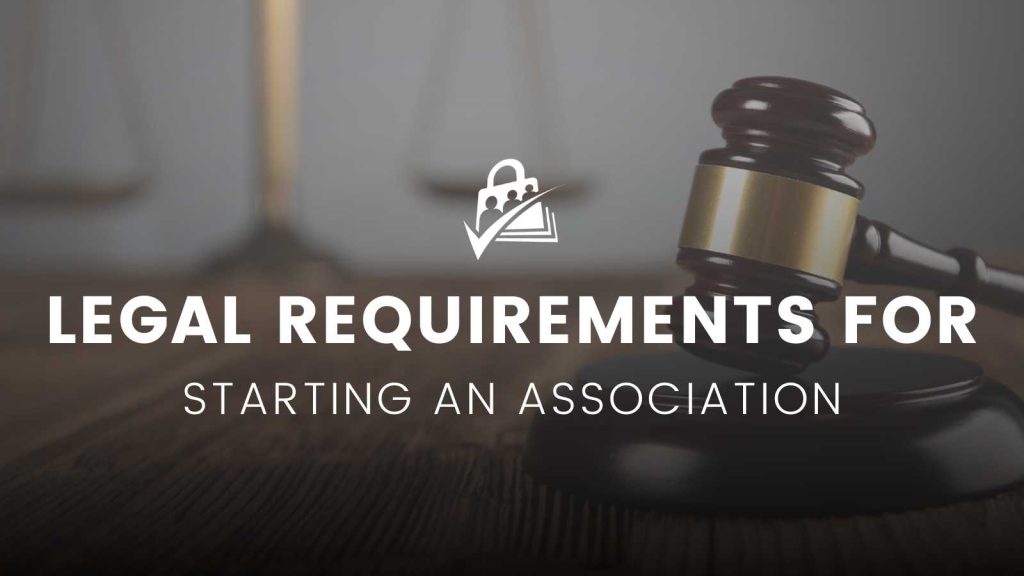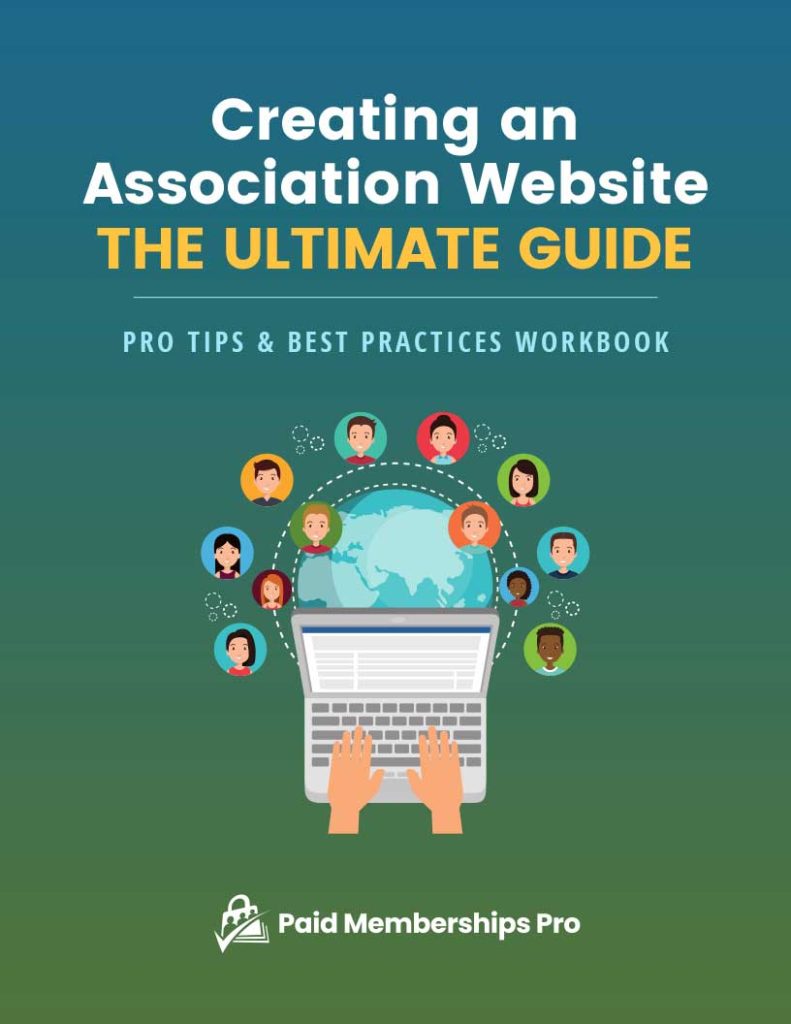Whether you’re creating an organization to provide professionals with access to educational materials, or you want to create a homeowner’s association for your neighborhood, knowing the legal requirements for starting an association will help you get your organization off the ground.
But before you start recruiting members, it’s crucial to make sure you understand the legal definition of an association and what you need to do to stay on the right side of the law.
In this post, we’ll cover all of the fundamental legal requirements for starting an association, so you have some guidance as you embark on your membership journey.

What is an Association?
In the United States, associations are required by law to meet a specific definition. Legally, an association is:
a group of people who have come together for a specific purpose.
According to the IRS, “The association must have a written document, such as articles of association, showing its creation” and “at least two persons must sign the document.”
The law in every state is different, so even though the IRS has outlined legal requirements for an association, it’s always a good idea to check the laws for your local area before getting started.
Remember that not all associations are nonprofit organizations / 501c3, so make sure that your research is relevant to the type of association that you’re creating.
3 Types of Associations
There are three primary types of associations you can create. The purpose of your association will determine which model you choose.
Let’s look at all three.
1. Professional Associations
A professional association focuses on a specific industry. Professional associations help their members by offering educational content and/or professional development specific to that industry.
Generally, there is at least one annual meeting or conference hosted by a professional association. This allows members to meet and network while discussing industry innovations and news.
The professional association will also usually invite industry leaders or other keynote speakers to give presentations.
2. Social Associations
Of the three types of associations, social associations make up the smallest group. These organizations generally include clubs or fraternal organizations.
Many of these associations have chapters or sub-groups specific to their region—and because these groups are in local chapters, they tend to have a community focus as well.
Many social associations are responsible for organizing things like volunteering efforts and local social events, for example.
3. Trade Associations
Unlike professional and social associations, trade associations consist of organizations rather than individuals. Each organization within the association is a primary member, with multiple “child accounts” for individuals within the organization.
These associations are usually designed to create change of some kind, often at the legislative level.
Trade associations also typically work to create industry standards or conduct research that benefits the industry. They may also offer professional development opportunities, but for the most part, their focus is on improving the industry itself.
Legal Requirements for Starting an Association
Before you start your association, it’s essential to understand the legal requirements in order to avoid potential problems with the law. Creating an association with a strong legal foundation can help save you a lot of time and stress down the road.
Steps to start your association
How you choose to protect your trademark is up to you. You are not required to register your trademark, but where or whether you decide to register your trademark can determine the scope of your rights. Specifically, you can rely on common law rights or file for state, federal, or international trademark registration.
United States Patent and Trademark Office
Remember that some of the steps listed may be more or less relevant to you based on the long-term goals of your specific association.
- Register the legal name of your association, if appropriate. Starting a business doesn’t always require a trademark name. In fact, the act of publicly beginning to use a business name is legally equivalent to establishing your rights to that business name.
However, if your association goals are far-reaching, or you believe an association with a similar name already exists, you are best served by conducting some trademark research before your brand is firmly established.
To make sure the association name you want is available, you can check the United States Patent and Trademark Office. If it’s available, register it so no one else can use it.
- Build a business plan. Make your plan brief and comprehensive, sharing the purpose of your organization in the most direct way possible. Establish long-term goals and outline them in your document.
- Determine the legal structure. Associations can be incorporated or unincorporated. Incorporated associations follow a legal structure determined by the local laws and are usually not-for-profit associations.
Unincorporated associations are groups of individuals with no authority outside of the organization.
- Consider your leadership structure. When you start the association, you may not need a large leadership body. But think about the future and what the ideal board or governing entity for your association would look like.
- Create and file bylaws. Make it clear how a person can become a member and how the membership starts and ends. Decide if the association will have the power to terminate a membership, for example.
Having rules is important, as is having rules for how to change them.
- Draft and adopt policies and procedures. How do you want your association to function? Creating a procedure for an association’s operation is the best way to make it run smoothly.
- Establish membership requirements. Your membership requirements should be clear, as should your membership approval process.
- File for tax exemption. One of the benefits of incorporating your organization is becoming tax exempt. You’ll need to register with the IRS as a 501(c) organization to file for tax exemption.

ASSOCIATION PLANNING WORKBOOK: DOWNLOAD NOW
Download the companion workbook to plan your online association. It’s packed with 11 worksheets to help you narrow in on your association goals, structure, approval or community policies, marketing process and more.
Tips for Remaining Legally Compliant
Once you’ve met the legal requirements for starting an association, you must remain legally compliant over time.
To remain legally compliant:
- Use management software. Good membership software will help you keep all of your member data organized and help you see how your membership is doing. Plus, it will help you effectively manage your association by streamlining payments, calendars, and communication with your members.
- Maintain IRS compliance. Once your association has achieved 501(c) status, you must follow some specific rules to make sure you don’t lose it.
- Check with your local jurisdiction. Even if your organization is already up and running, always be aware of local legal requirements to stay up-to-date on any changes and make sure that you aren’t breaking any local laws.
- Build a solid team. How many people do you need to run your association like a well-oiled machine? Who do they report to?
Once you can answer these questions, hire the people that you need and make sure they also understand how to maintain your organization’s legal compliance.
- Recruit members. Reach out to people who would be a good fit for your association. Go to where they are, whether that be a workplace or social media channel, and advertise your organization.
For example, if you’re starting a professional organization, talk to people about it in your workplace and reach out to others in your industry. Consider whether contacting people through LinkedIn or posting an ad there might help build your organization.
- Create ongoing value. Whether your’re running a professional, social, or trade association, you can keep your members coming back by offering them something they can’t get anywhere else. This offering could include things like helpful educational materials or exclusive networking opportunities, for example.
- Create a membership site. A membership site with good association management software will allow members to pay dues and manage their membership independently. It can also serve as the “single source of truth” for information about the association.

Paid Memberships Pro is Association Management Software built for WordPress
The right association management technology fits perfectly, so your time can be spent building relationships and serving members.
With robust free tools like WordPress and PMPro, you can run your association as a very lean business, spending less than a few hundred dollars per year.
Ready to Start an Association?
We know that a WordPress site has tons of moving parts. You have other options, like an “all in one” solution that feels simpler, even if the price tag is significantly higher than an open source platform like Paid Memberships Pro.
Paid Memberships Pro is a WordPress association plugin with features to help you manage the content your members see, communicate with your members, provide payment options, access administrative data, and upgrade the member experience.
We’ve got a complete guide that tells you exactly what you’ll get — the plugins, the support, and the training — when you manage your association on WordPress.




